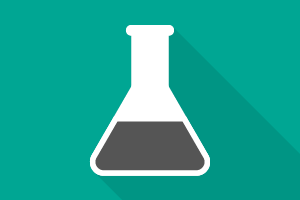Classroom Resources: Kinetics
Filter by:
1 – 11 of 11 Classroom Resources
-

Reaction Rate, Order of Reaction , Activation Energy, Catalysts, Rate Constant, Rate Determining Step, Reaction Rate | High School
Lesson Plan: Reaction Mechanisms
In this lesson students explore reaction mechanisms and their connection to rate laws and energy profile graphs through a game, relay race, and finally a chemical demonstration.
-

Equilibrium Constants, Reaction Quotient, Activation Energy, Energy Diagrams, Catalysts, Enthalpy, Entropy, Spontaneous vs. Non-spontaneous Reactions | High School
Lesson Plan: Making Connections in Kinetics, Equilibrium and Thermochemistry
In this lesson students will understand the connections between the equilibrium constant (K) and the reaction quotient (Q) as well as how they determine the favorability of a reaction. Additionally students will be able to determine if a reaction is kinetically favored or thermodynamically favored.
-

Reaction Rate, Activation Energy, Hess's Law, Exothermic & Endothermic, Le Châtelier's Principle | High School
Lab: Kinetics and Equilibrium
In this lab, students will investigate the reaction of the hydrogen sulfite ion (HSO3-) and the iodate ion (IO3-) to determine the effect that changing concentration and temperature has on the reaction rate.
-

Catalysts, Order of Reaction , Activation Energy, Lewis Structures, Resonance, Molecular Geometry, Activation Energy, Energy Diagrams | High School
Lesson Plan: The Downside to Catalysts - An Exploration of CFC's on the Ozone Layer
In this lesson students will make observations of a colorful homogenous catalyst and intermediate in a reaction demonstration that will spark their interests. They will then work in teams to analyze graphs and data sets in order to make a real-world connection to AP topics in kinetics such as catalysts, intermediates and reaction mechanisms by exploring how CFCs work to break down the ozone layer. Students will also investigate and discuss this environmental issue.
-

Reduction, Oxidation, Redox Reaction, Catalysts, Activation Energy, Combustion | Elementary School, Middle School, High School
Video: Catalytic Converters Video
This video investigates the role of a catalytic converter and its corresponding chemical reactions within a vehicle. Students will learn about both oxidation and reduction reactions and how they, in combination with a catalyst, can impact the molecules released in a car’s exhaust.
-

Chemical Change, Exothermic & Endothermic, Redox Reaction, Reaction Rate | High School
Demonstration: Potassium Permanganate Demo
In this demo, students witness two chemicals that take some time to react. The KMnO4 and glycerin come into contact and appear not to react, but then a flame results. This is an example of an exothermic redox reaction.
-

Titrations, Equivalence Point, Indicators, Acid Base Reactions, Chemical Change, Salts, Molarity, Reaction Rate, Order of Reaction , Error Analysis | High School
Lab: Titration Lab with Kinetics
In this lab, students calculate the molarity of an unknown using a titration and also by solving for a dilution.
-

Reaction Rate, Graphing, Temperature, Concentration | High School, Middle School
Lab: Starch-Iodine Clock Reaction
In this lab, students perform an iodine clock reaction to determine how concentration and temperature effect the reaction rate.
-

Reaction Rate, Chemical Change, Reaction Rate, Observations | Middle School, Elementary School, High School
Demonstration: Simple Kinetics
In this demonstration, students will see that different food dyes react with bleach at different rates.
-

Catalysts, Reaction Rate, Experimental Design, Scientific Method, Chemical Change, Error Analysis, Balancing Equations, Percent Yield, Stoichiometry, Chemical Change, Measurements, Error Analysis, Dimensional Analysis | High School
Lesson Plan: Catalysis & Catalytic Converters
In this lesson students will be introduced to catalysts while expanding their knowledge of chemical reactions and stoichiometry. They will first learn about catalytic converters and then be challenged to create the best “catalytic converter” of hydrogen peroxide to oxygen gas in an inquiry-based activity.
-

Indicators, Le Châtelier's Principle, Acid Base Reactions, Chemical Change, Chemical Change, Limiting Reactant, Reaction Rate, Observations, Chemical Change | High School
Demonstration: Milk of Magnesia Magic
In this demonstration, students will observe a color change in a milk of magnesia solution as vinegar is added.
Filtered By
Grade Level: ✖ High School
✖ Advanced Chemistry: AP/IB Chemistry
Clear All Filters